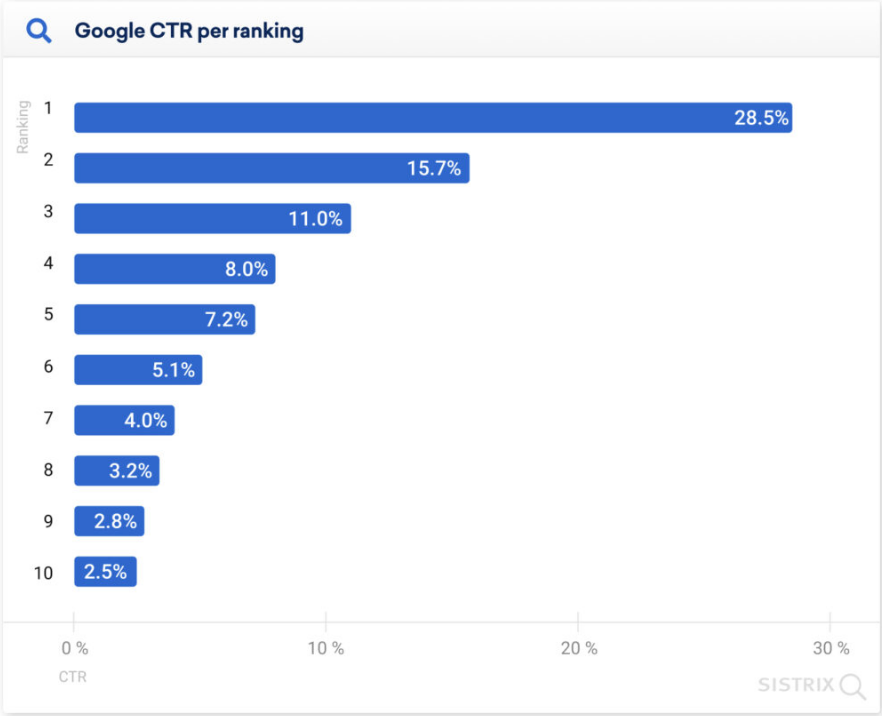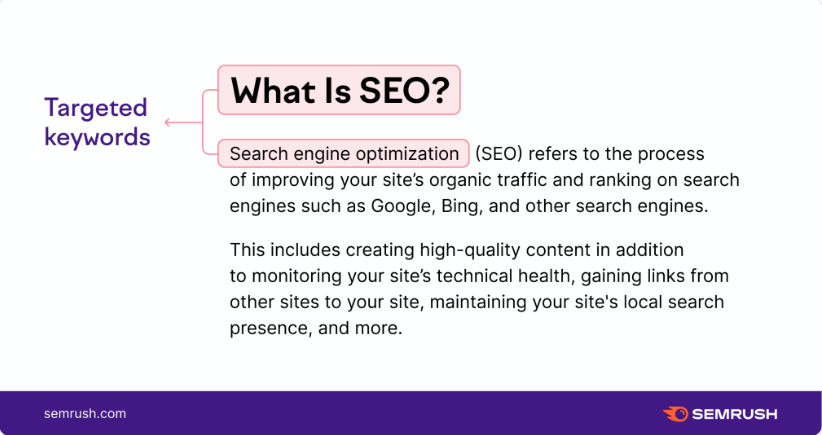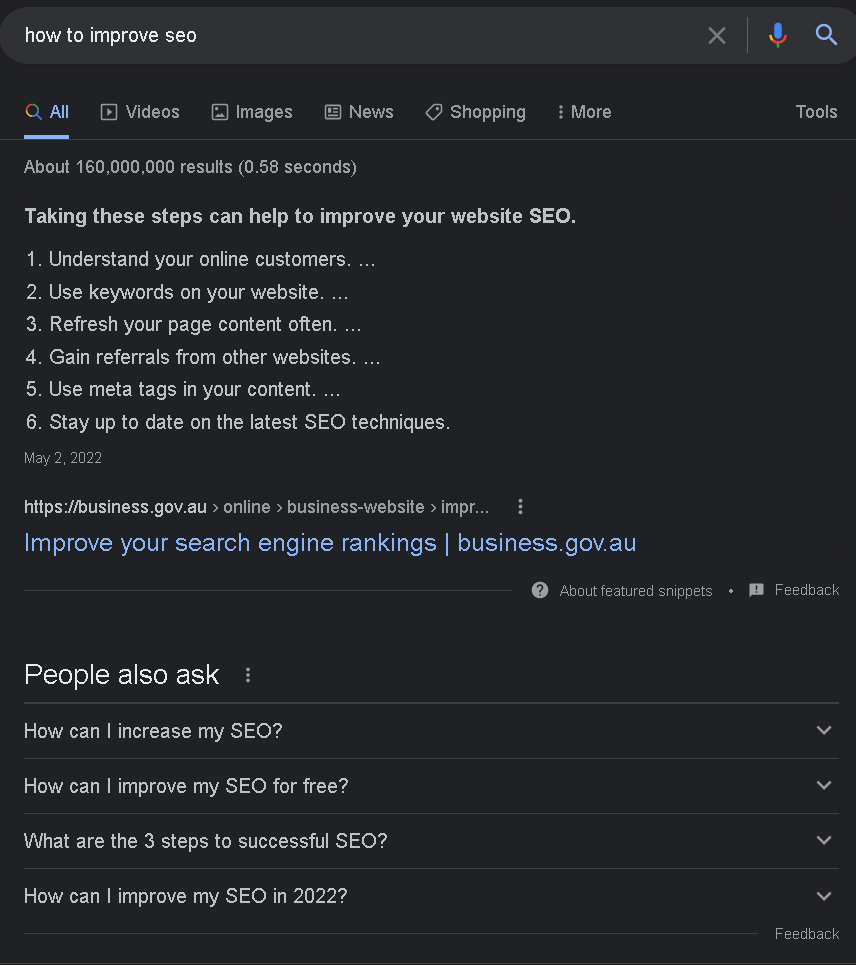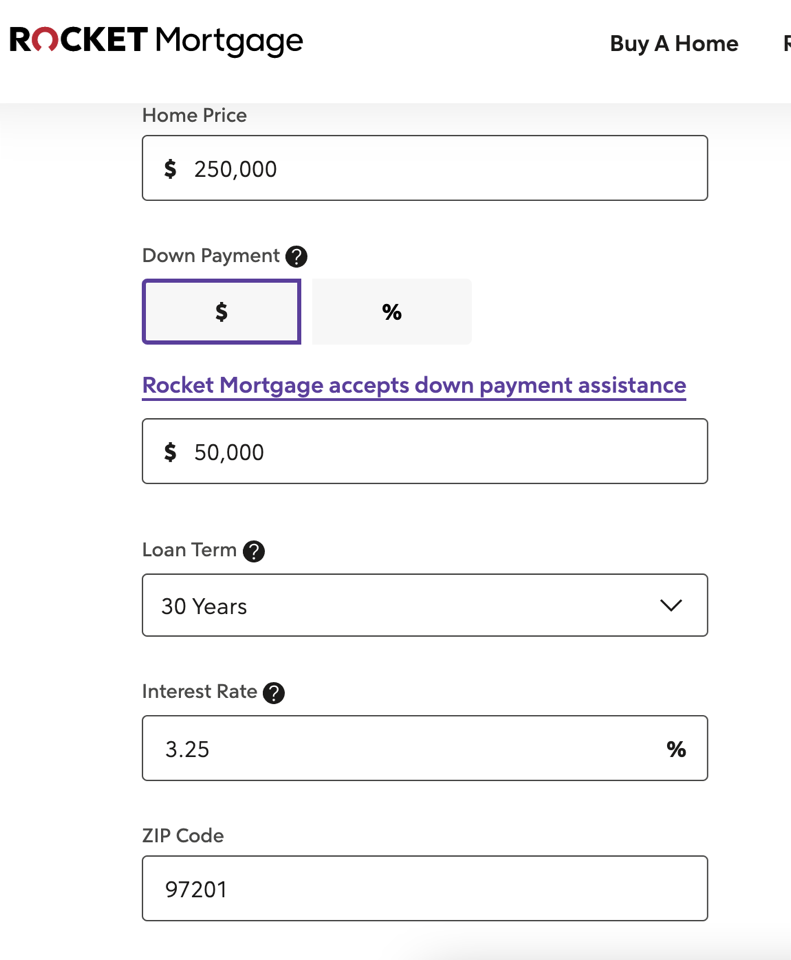Site rankings change over time. Sometimes they rise, and sometimes they fall—but more often than not, you have the ability to impact your site’s ranking. If you have witnessed a sudden drop in your website’s Google ranking or other relevant KPIs such as traffic or conversions, there are many possible reasons why this may be happening and several actions you can take.
This attention to detail matters. The #1 organic search result in Google has an average click-through rate (CTR) of 28.5%. The average CTR deteriorates for every result down the list. This coincides with the findings that only 0.78% of internet users click on results found on the second page. The lower your page ranks, the more difficult it is to increase traffic on your website.

So what can you do about dropping website rankings? How can you prevent this from happening? Keep reading to find out how to get your site back on track with improved SEO rankings.
Keyword Placement and Accuracy
Keyword research is a crucial part of optimizing your site for search engines. When you’re adding new content or updating existing pages, it’s important to keep keyword placement in mind. The main goal of placing keywords is to make sure the right words are used in the right places so that search engines can easily recognize them.
When companies first start building their website, many don’t yet have a keyword strategy in mind. Or, if they do, they’re often split testing to see which keywords increase website traffic. Maybe one product page says “cardigan” and another says “sweater.” By the time the site is live, you can often find a list of different keywords that appear in title tags, heading tags, content, and meta tags.
Are your keywords still relevant?
But as some choices outperform others or certain trends fade in popularity, keywords may become less effective—or perhaps even irrelevant. Sometimes keywords have seasonality. For example, “back to school sale” only makes sense in the late summer and early fall. If that’s the title of your homepage in April, expect the traffic to drop. Terms can also take on new meanings. In early 2020, “COVID-19” was usually part of an informational query, but over time it became more transactional, such as “where to buy COVID-19 masks.” Sites that failed to stay up to date dropped in ranking. To improve a website’s ranking, you need to keep an eye on both trending phrases and semantic associations with keywords.
More commonly, however, businesses have well-chosen keywords, but they start to sabotage their own efforts. If three dozen pages advertise “front-end development services,” search engines aren’t sure which one to put forth as the primary page. Essentially, pages can compete with each in what’s known as keyword cannibalization, resulting in all of the pages dropping in ranking. Another common mistake is site-wide keyword stuffing, which is an overcompensation to increase a website’s traffic. This can penalize your website and cause more harm than good.
In order to prevent this from happening, companies should be focused on building their brand’s overall SEO rather than solely inserting keywords and using keyword stuffing. Ensuring that your content is relevant to your audience will increase the likelihood of ranking well because search engines take into account how useful and well-written your content is when assessing its relevance to specific queries.
What does correct keyword usage look like?
This is where many people start but fail: they just randomly use keywords throughout the body of their text. This can lead to some awkward (and less than ideal) results. Don’t spam your entire content with the same keyword over and over. Instead, you should use appropriate variations of your keywords throughout the text—but don’t go overboard with them.
Here is an example of keyword stuffing:

Source: Semrush
On the other hand, this one demonstrates what proper keyword placement looks like:

A good rule of thumb would be to include the primary keyword in the following areas:
- Post title
- URLs
- H1 Tags
- First 100 words of your content
- Metadata (meta titles and meta descriptions)
- Image file names and alt tags
Algorithm Changes
The algorithm that powers search engines like Google is ever-evolving with an emphasis on making results reflect the intent of a searcher’s query better than ever before. As search engines continue to develop their understanding of what makes a site authoritative, some websites may suffer from rankings drops as a consequence. This is especially likely for sites that have been around for a while and built up an impressive amount of backlinks and traffic but haven’t adjusted to changes in the algorithm since then.
A good starting point to spot problems and increase website traffic is to conduct an audit of the content on your website. It’s easy for this to be overlooked or delegated as an unnecessary step, but it’s essential for making sure that the information you have on your site is up-to-date and relevant. This means not only updating old pages with new information but also adding new pages or information on pages you’ve already created so that you’re not asking potential customers to look for something you don’t have. The point here is to make sure that the search engines have everything they need in order to understand who you are and what you’re selling.
Content Usage
You might think that in today’s SEO environment you only need to focus on keywords in order to get increased traffic. After all, if you put your keywords into your content, it should rise higher in the search results, right? Not exactly. Having a lot of relevant keywords is still important, but not having enough content with depth can hurt your website rankings as well.
Are you providing answers to the questions your customers are asking?
Websites that don’t answer questions and aren’t helpful aren’t likely to get many views or links, which means they won’t receive the traffic needed to rank well. If someone is doing research online, unless the content is optimized and aligned with what they are looking for, they are more likely to move on and leave that website behind. This can make it very hard for a site to gain traction and increase its rank as its content deserves.
Not sure if you have the right questions? A good way to know what your target audience is asking is through the ”People also ask” feature on Google. The featured snippet is also a good place to start to see how competitors are doing it right.

Missing Links
One of the most overlooked aspects of increasing traffic online is making sure people can find your content. People love to talk about creating great content, but when it comes to actually ranking well in search engines, it’s not enough for you to have a good website. You also need to make sure that other sites and blogs are linking to yours.
When high-traffic or highly reputable sources place your links in their content, it can significantly boost both your page numbers and credibility. This is because search engines consider incoming links to be “votes of confidence” contributing to the increased quality of a website, and rankings are partly based on how many “votes” you receive.
Quality over quantity
If you’ve been following SEO best practices for a while, you’ve probably heard a lot about how valuable a link-building strategy is for increasing a website’s search engine rankings. Many businesses and people are concerned about the quantity of their backlinks. Rather than worrying about having as many backlinks as possible, focus on the quality of these links.
You might have a lot of good links, but if they’re from sites that aren’t relevant to your content, or if those links were built using black-hat techniques like article spinning or buying ads for irrelevant keywords just to increase traffic, your site’s rankings may drop instead of improve. A few great sources linking your content are more valuable than many low-rate sites that will not provide valuable traffic.
What Users are Searching for Online
With an estimated 5.6 billion Google searches alone each day, trends are constantly evolving. With this trend came a complete shift in what users wanted from their search experience. Users no longer wanted to be fed search results—rather, they wanted results that matched their needs. Building a website based on what you want people to find is no longer the most important part of SEO (search engine optimization). Rather, it’s about the user. By taking into account what your audience is looking for and making sure you are providing them with the information they seek, you can get a significant increase in traffic.
Use tools to identify key search terms and trends related to your business.
One way to ensure your site is performing at its best is by identifying key-search terms and trends as they relate to your business and modifying your pages to reflect the latest searches or answer new questions. Search engines track these keywords closely because they indicate that an individual was able to find your site through a search engine and identify what they were looking for on your page. This is also why it’s important that you regularly update your content so you can stay current with changes in search terminology and include updated information on relevant topics.
Know your customers’ goals.
If you’re selling products or services, then improving your website’s search engine rankings can boost your sales and increase revenue. To do that, it’s important to know who your potential customers are and what types of things they might be searching for online.
For example, a home mortgage company offering a mortgage calculator is good anticipation of customer search intent. Users often want a ballpark figure before they begin a formal relationship with a home mortgage lender, and offering this feature gives the site value.

If you’re providing information or education that people can use to make decisions about their lives, then you’re more likely to rank well. Google has made it clear in its most recent update that helpful content is what increases site traffic. Ask, what would be helpful to my customers?
Page Load Speed
Loading speed is a key factor to increase traffic to your site and improve search engine rankings. This means that the longer your page takes to load, the lower it will rank. Slow-loading pages usually have a high bounce rate and dissuade people from staying on your site for long.
Close to 73% of internet users will access the internet solely via mobile devices by the time 2025 arrives. According to official Google reports, over 50% of searchers now use their mobile devices to find businesses. If you have a responsive mobile-friendly design, your site visitors will also be more likely to visit from their phones. Make sure your website is easy to navigate on the go.
To check whether your site fits the criteria, you can use Google’s Mobile-Friendly tool to come up with this result:

Summary
When it comes to SEO, quality trumps quantity. However, SEO is a tricky business that requires constant attention and adjustments to your content. What was “quality content” ten years ago may not be today. It’s not quite as simple as throwing in some keywords and obtaining a few links. If you want to increase site traffic and avoid ranking drops, then you need to be mindful of your keyword placements. This also means monitoring your site’s rankings, creating quality content that speaks to search engines, replacing outdated content, establishing your authority through link building, staying up-to-date on algorithm changes, and making sure that your website loads quickly.
In conclusion, SEO is not a quick fix. It is a long-term strategy that requires you to be consistent with the decisions you make to bring your site up in the rankings. Staying on top of your website’s rankings can be a difficult task. Fortunately, there are plenty of SEO service companies that can help you increase website traffic and ensure that you’re taking all of the relevant factors into account when it comes to keeping your web pages ranked high.
Have questions on the methodology BESTSEO uses? Looking for recommendations on which SEO company to work with? Get in touch with us now to learn more.

